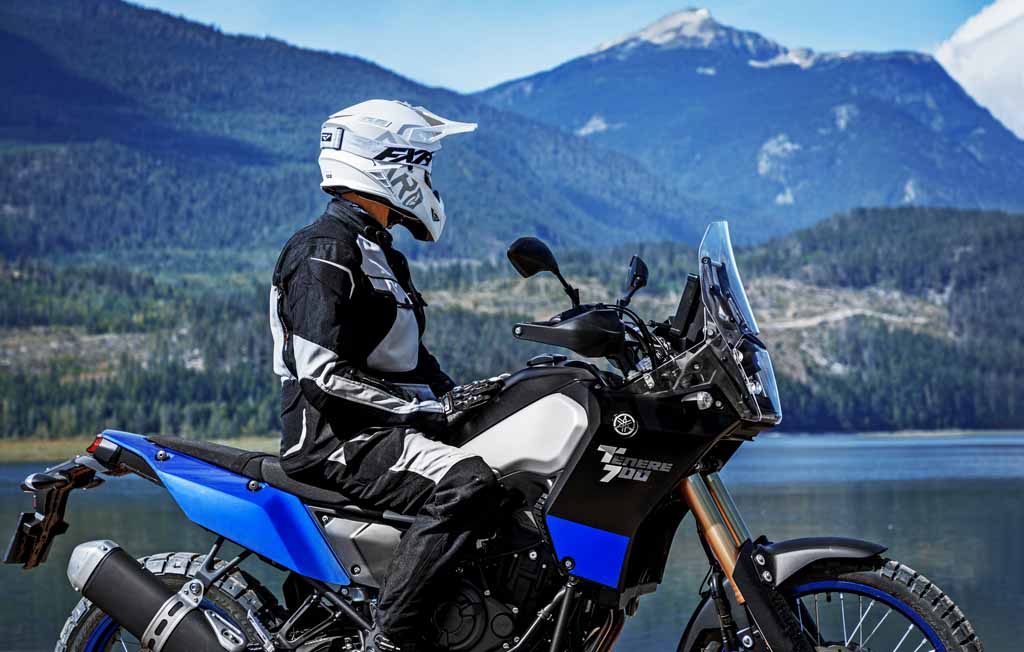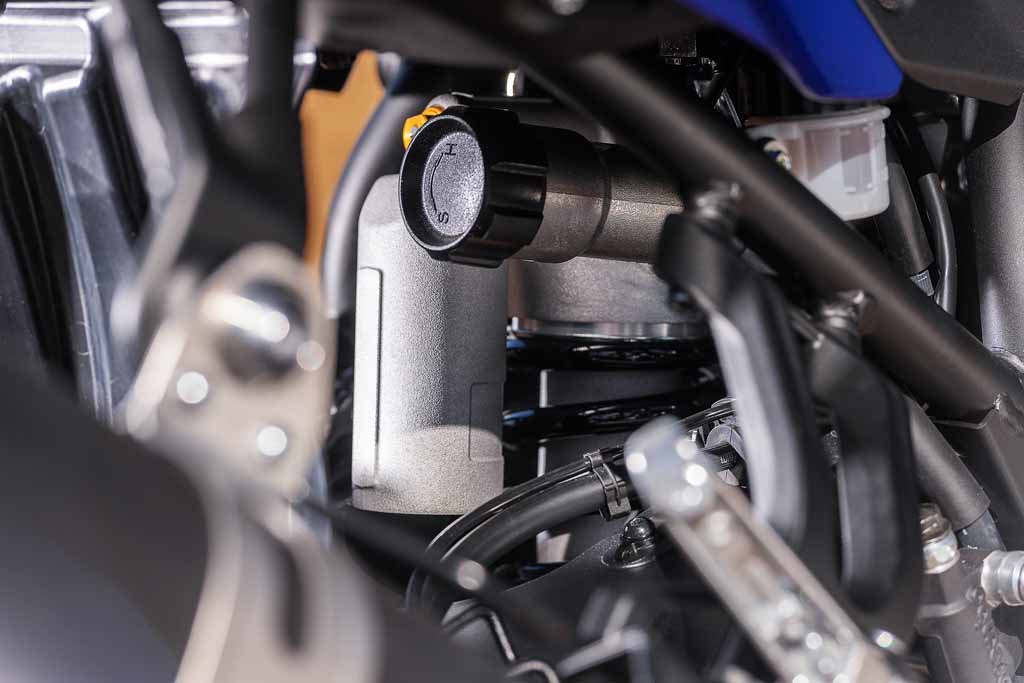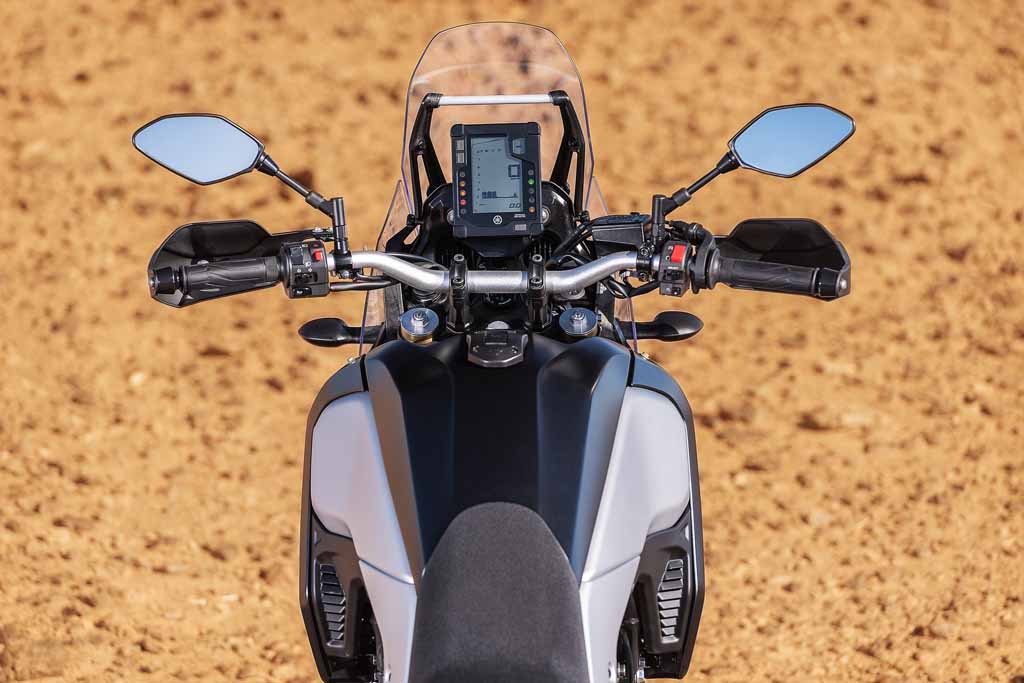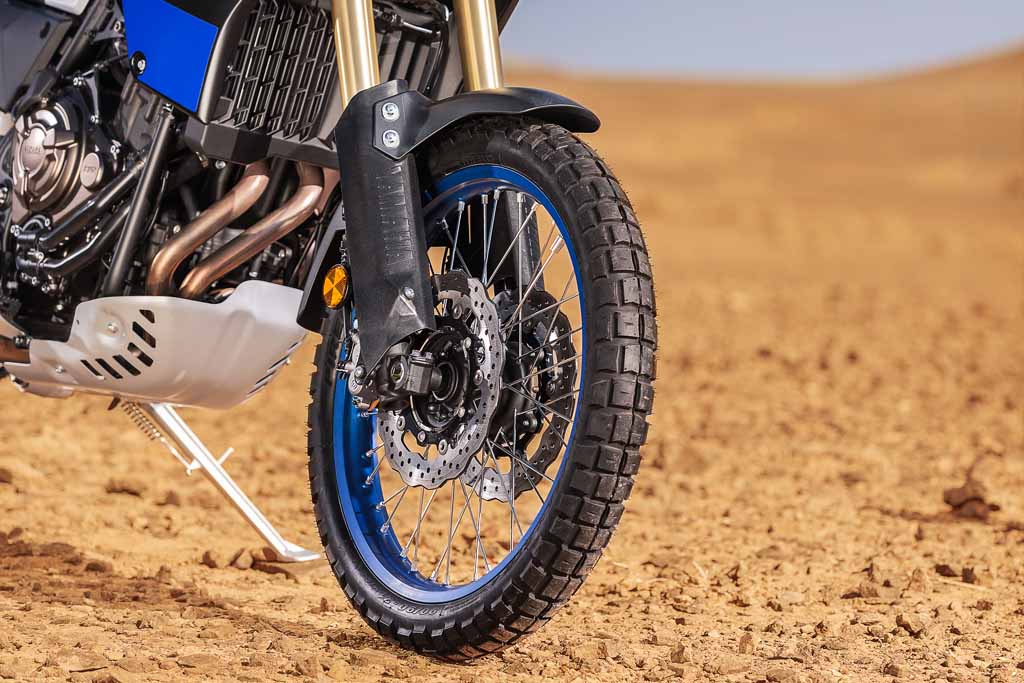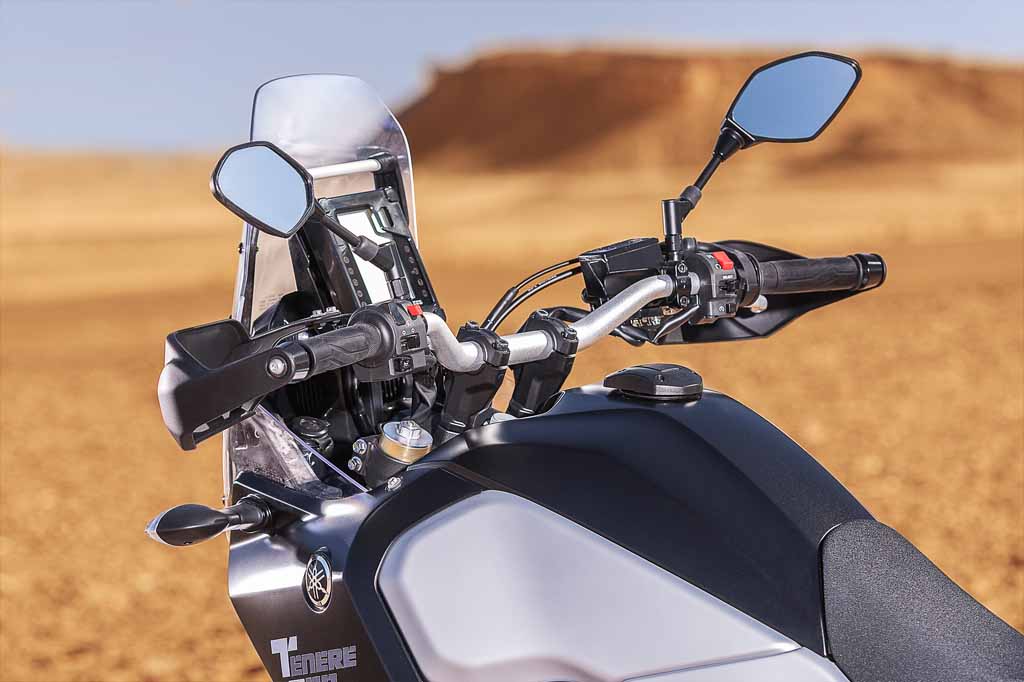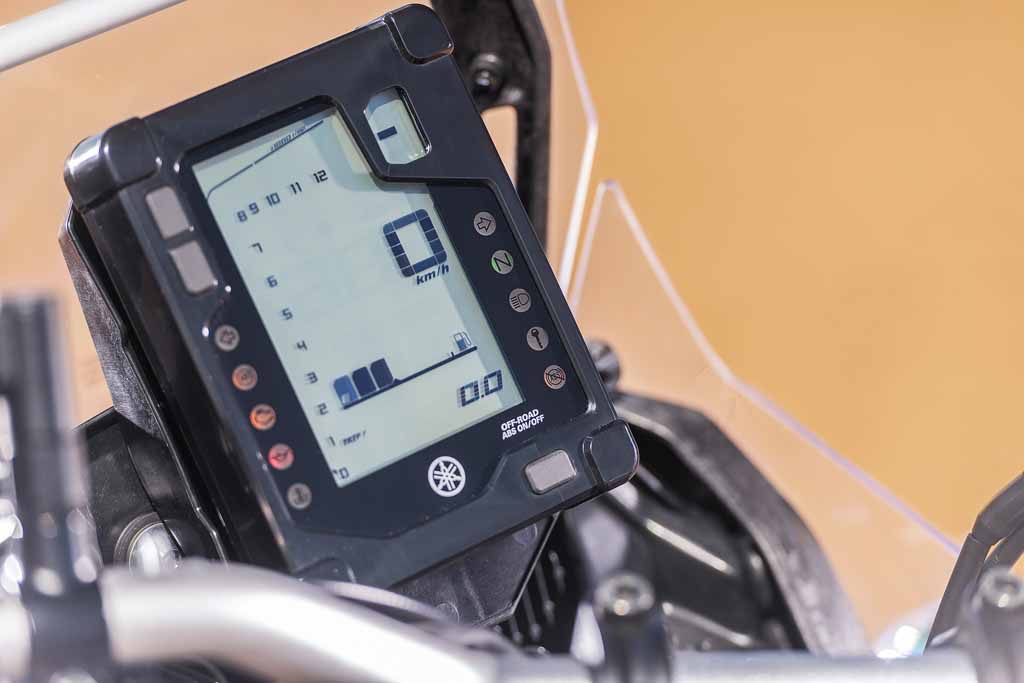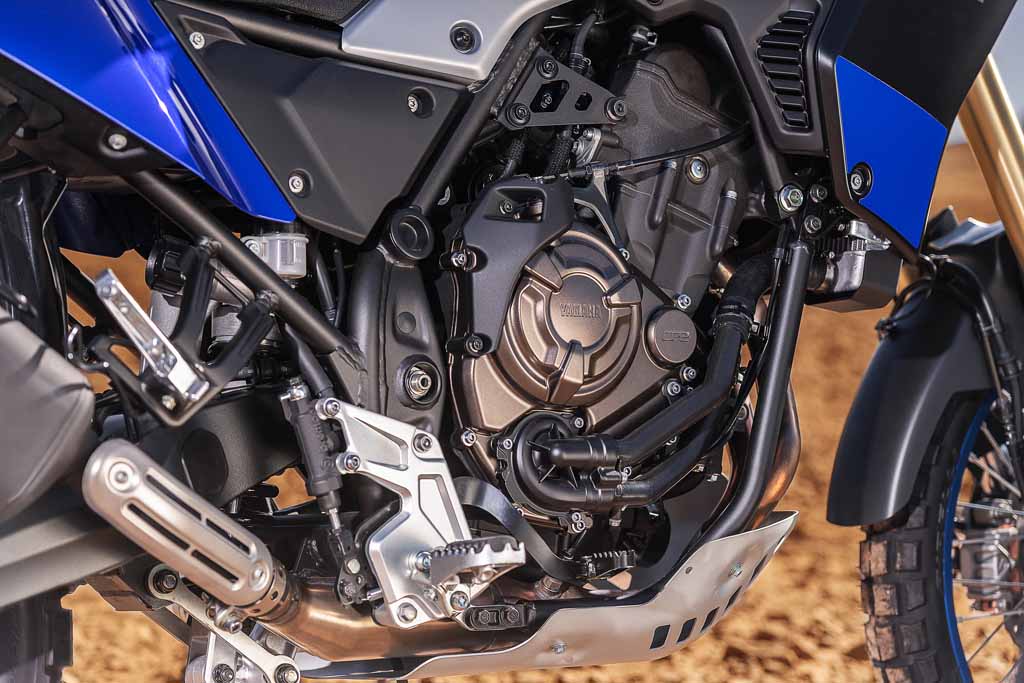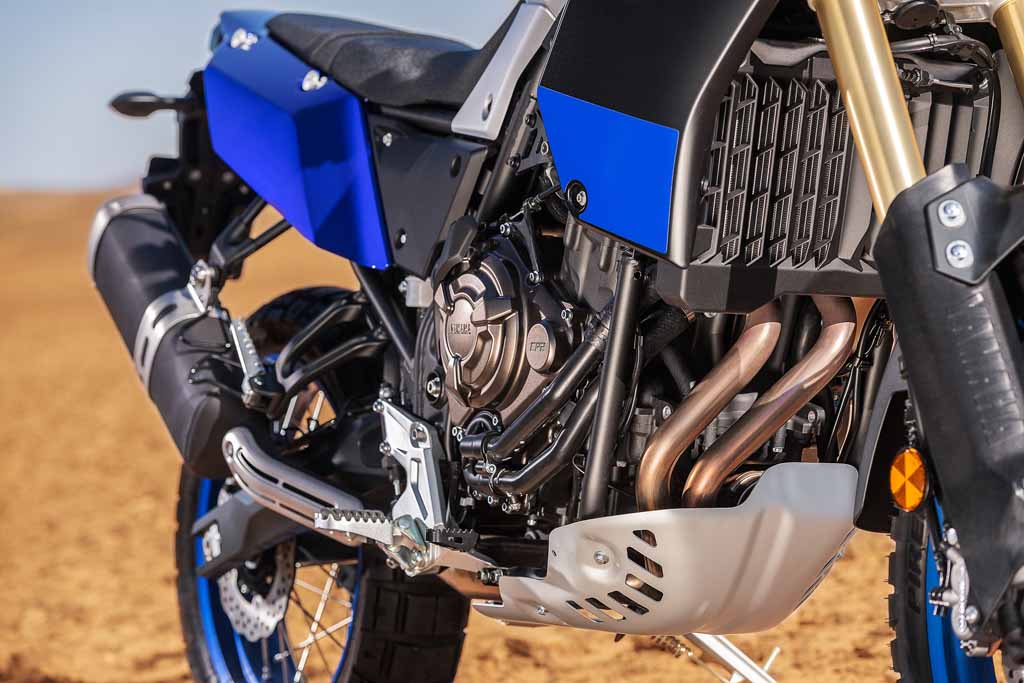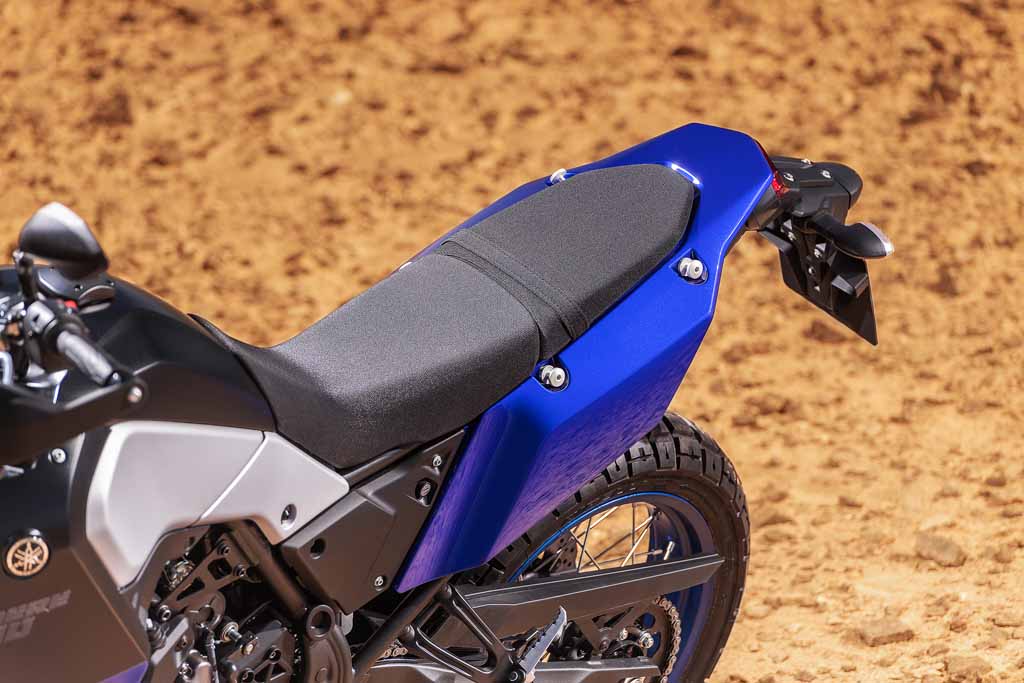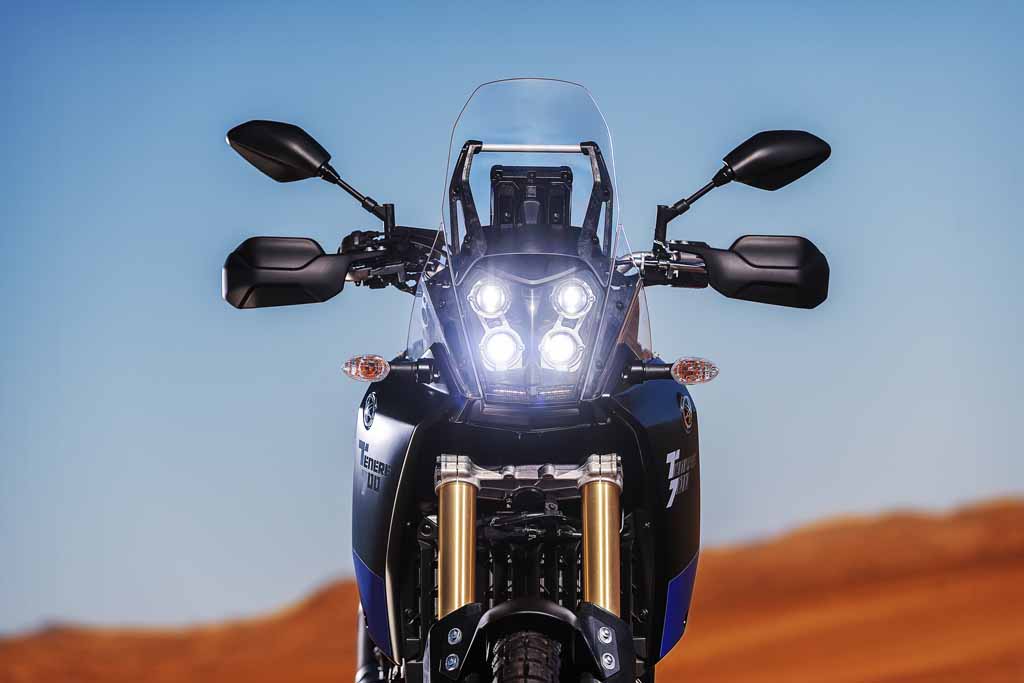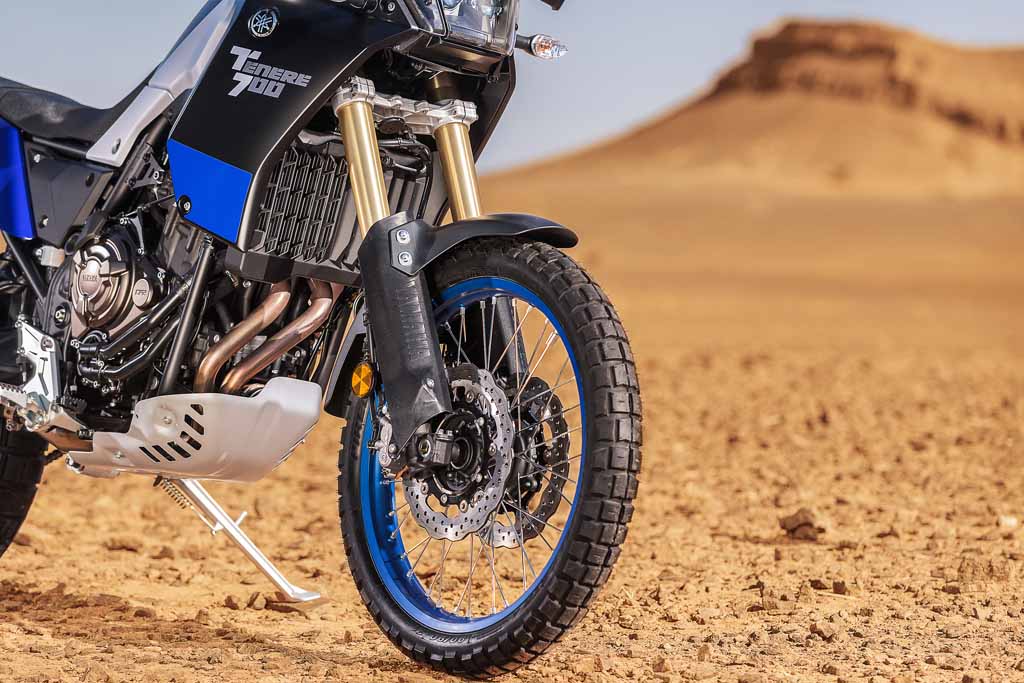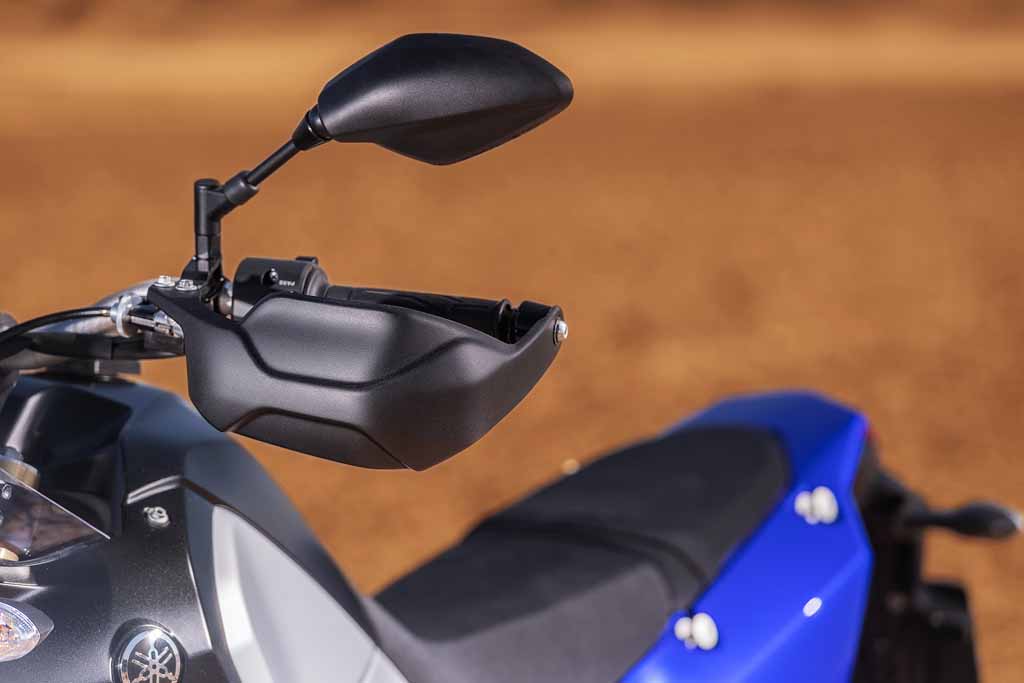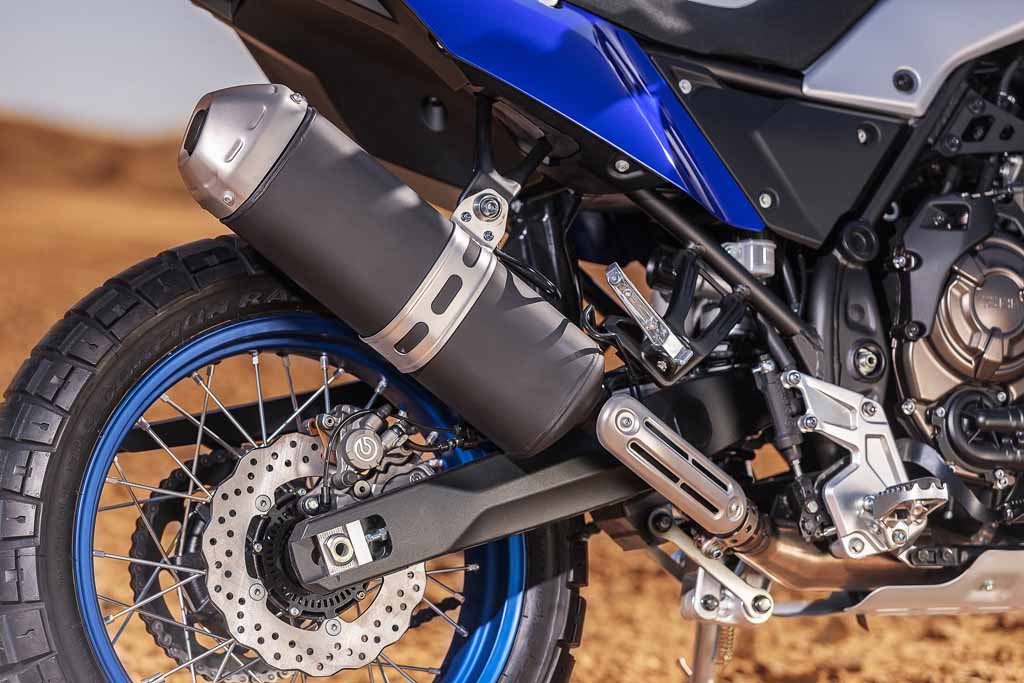FUN, PLAIN AND SIMPLE
A STRAIGHT-FORWARD ADV BIKE
The long-awaited Yamaha Ténéré 700 finally landed on North American docks just before summer. We can say that its reputation preceded it. My European rider friends were happy to tell me how much they appreciated the new version of this great Yamaha classic.
Racy, leggy and with a pure rally look, the T7 displays its colours at first glance. I still had to determine if it had what its looks promised.
Once in the saddle you are at a height of 875 mm, which doesn’t make you dizzy but will still require riders under five-eight to exercise their calves while standing on the tips of their toes at stops. A 20 mm lower seat is offered as an option as well as a rally seat and a mono seat. But never mind the seat as this bike is made for long rides standing on foot pegs where you only stop for a picnic on the edge of a lake in the countryside.
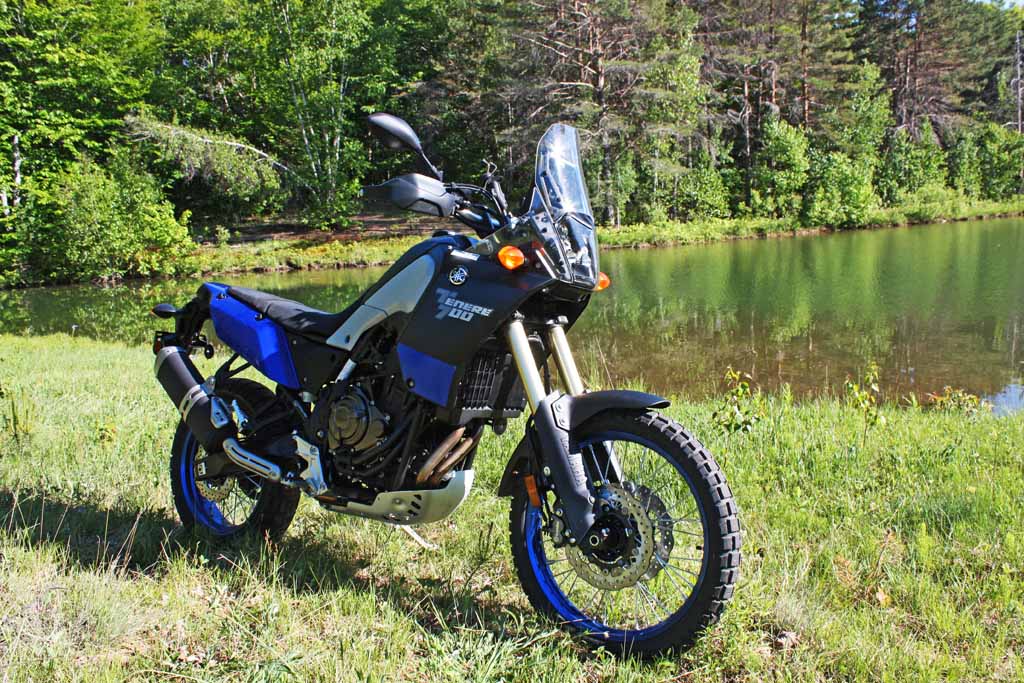
The handlebar falls naturally under the hands and offers standard hand guards, accentuating the off-road style. The riding position is ultra comfortable and the saddle is decently comfortable but nothing more. The footrests are positioned low enough that even taller riders don’t feel restricted.
Wind protection is pretty good considering the narrowness of the front end. The high windshield splits the air efficiently and the fairing around the 16-litre tank provides good lower body protection. You can easily ride for a long time at highway speeds without being too bothered by the wind buffeting.
Its parallel twin CP2 liquid-cooled engine is a charm and offers an astonishing power band for a 700 cc. Surprisingly enough, it only churns out a claimed 72 hp at 9,000 rpm and 50 lb-ft of torque at 6,500 rpm. It’s the same engine as the MT-07 but it’s tweaked to make it more dual-purpose ready. The power is not outrageous but the power delivery is smooth and manageable. The lack of traction control does require a bit more skill from the user, but if you have a bit of experience it is pretty easy to manage. Especially since the majority of buyers of this beauty will not go and compete in the Erzberg Rodeo but will most probably aim for gravel roads and a few easy single tracks.
My first ride took me to sandy terrain with several climbs and long sections of medium deep sand. Unlike many, I like to ride the sand. I like the feeling of floating with the bike. The T7 did not disappoint me cycle-wise, but the Pirelli Scorpion Rally STR tires with which the demo bike was equipped made me question if these tires would be the right choice for a rider that wants to do more off-road than on. On gravel and asphalt roads I liked their performance but as soon as we rode on slippery surfaces like sand or mud, I had to stay on the lookout to control the skids as the bike danced under me like an eel.
Fortunately, the bike is quite narrow, the centre of gravity is low, and the clutch lever is precise and helps to control the rear tire traction. No electronic traction control here, just good old judgment and wrist control. Sometimes it feels good to go back to basics, off-road riding without any electronic aids except ABS, which you can turn off.
On the road, the bike is efficient, keeps its steering well, but the large 21-inch front wheel obviously offers a little more resistance to changes of direction. The relatively short wheelbase and rather wide handlebar give enough amplitude and easy turn-in to make up for that. The adjustable suspension allows adjustment to the needs of the rider and makes the bike versatile enough for anything from duo road trips to sporty off-road tours.
The bike also offers 24 cm (about 9 ½ inches) of ground clearance which, combined with the large front wheel, makes it easy to overcome quite a few obstacles.
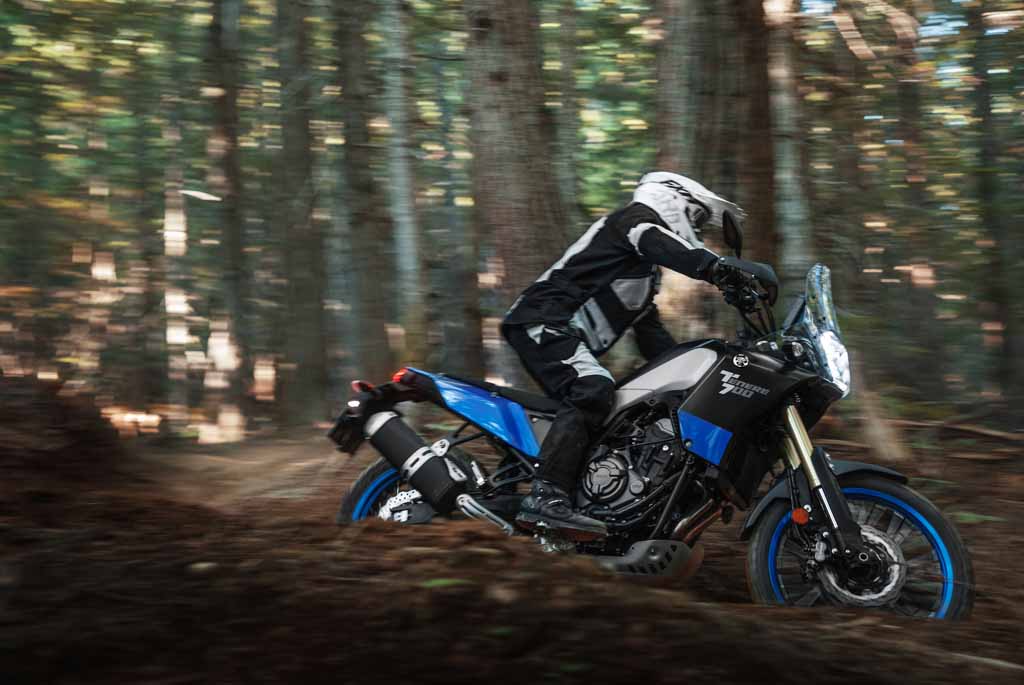
As for standard equipment, let’s say that the rider who wants to do serious off-roading will benefit from consulting the parts catalog offered by Yamaha or other manufacturers to add more optimal protection. The engine guard will be fine for gravel roads but a bit underperforming for more demanding rides.
The LCD screen is simple and a bit boring to look at but it does offers basic info as well as a gear indicator which I appreciated on long gravel rides. There is also an accessory bar for GPS and a 12 volt outlet. Yamaha has clearly chosen the simplicity approach for this machine and there is nothing that is not absolutely necessary but just about everything else you need for an adventure bike. An uncommon solution at a time when large dual-
purpose motorcycles are increasingly encumbered with electronics. This obviously makes it possible to enter the market with a simple, fun, efficient and inexpensive motorcycle. We like.
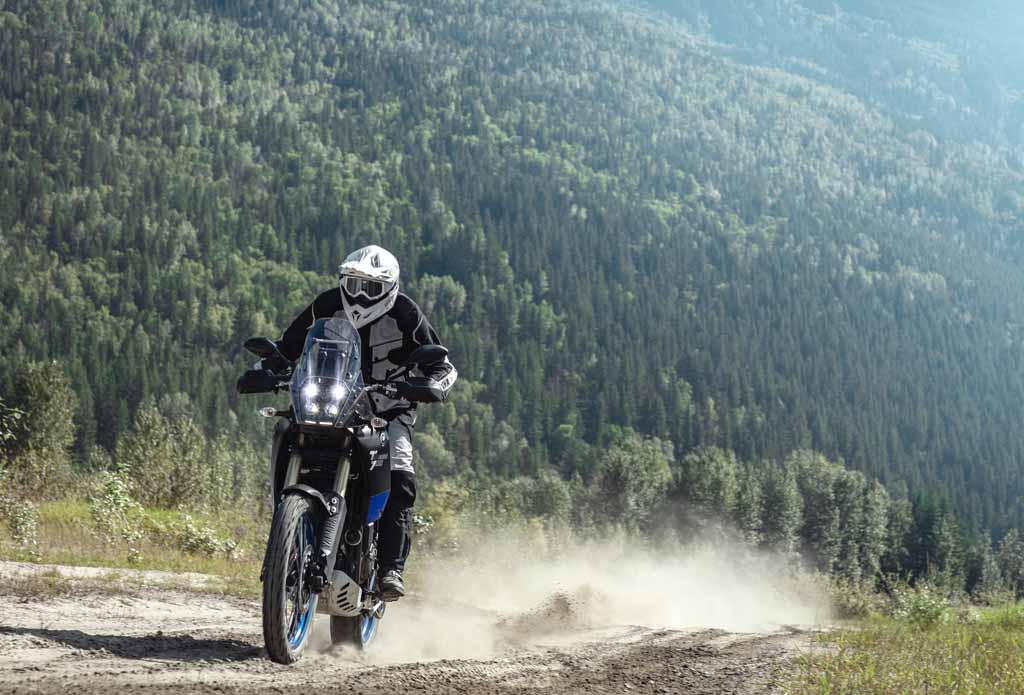
At 452 pounds (205 kg), it’s no featherweight but you don’t feel its weight at all on the road or on the trails. Of course, if the bike falls on its side your back will resent it, but I never felt intimidated by its weight despite riding sections on sand, mud and rocky climbs. The Ténéré is really fun to ride. And as a bonus, the exhaust growls just enough to make you want to hear more and more.
Compared to larger bikes, more than one-litre motorcycles, this 700 has a manoeuvrability and a lightness that encourages us to try more things than we would dare to do with a bigger bike. Slippery climbs, rocky trails and steep descents are all possible. The lower weight and the quick responsiveness of the Ténéré combine to put a smile on your face and take the fear out of losing control of a motorcycle over 500 pounds. Also, the lower price of the motorcycle and its components may encourage us to take more risks.
There are a lot of interesting things in this Ténéré. We have a nice, clean and simple bike with a smooth engine but quick enough to lift the front wheel with the slightest pull of the clutch and offering enough torque to make long glides on gravel roads, with the added bonus of Yamaha’s seal of reliability and durability and an attractive warranty, all in an attractive and affordable coating.
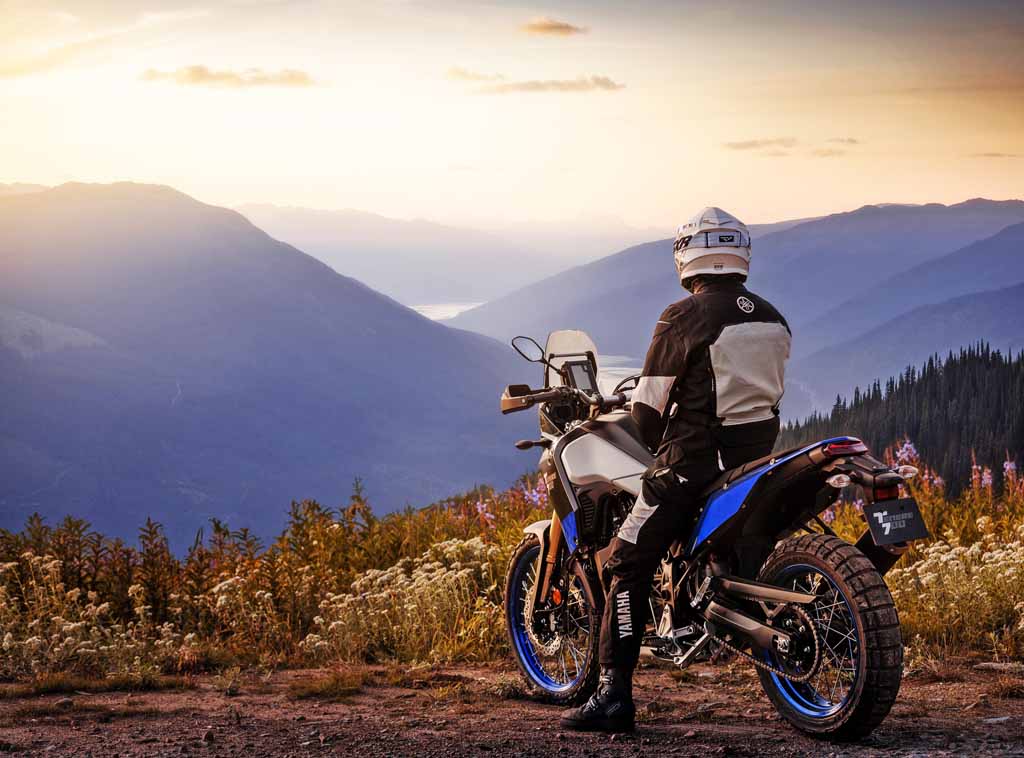
Of course, it doesn’t have a rock-solid electronic suite. It doesn’t have a TFT dashboard or trendy blings, no hill assist or an app to control its stats. Only off-road ABS and no big name components but for the Brembo brakes. But its value for money is arguably one of the best we’ve seen in this category for a while. Whether you need more electronics or more fun, how much and at what price is up to you. This segment of dual-purpose motorcycles continues to grow and purchasing decisions are getting harder to make. It’s always about compromises when choosing a motorcycle. But having too many choices is a nice problem to have. Isn’t it? Starting at $12,399.
